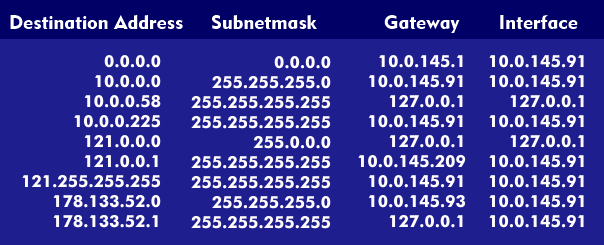static routing
Static routing is a routing method that works with predefined routes. The routes are stored in the router in the form of a routing table and can only be changed by the administrator. Such a system is static in itself, since it cannot automatically react to traffic situations, to congestion of transmission routes or to interruptions of connections.
In static routing, the route between any end systems is defined during network design and stored in the router. The end devices are each assigned to a router via which they can be reached and via which they can reach other destinations.
The exact configuration of the network, the number and location of the routers, the transmission paths used and their transmission capacity must be known when the routes are defined. Then the number and location of the end systems and routers, the existing lines and their capacity, the expected load volume and the priorities among the network nodes can be taken into account as configuration parameters. Static routes are uniquely determined by the destination address, the subnet mask and the next hop.
The disadvantage of static routing is its inflexibility, since in case of change the static route must be reconfigured manually. This applies to errors, network expansion, end system moves, etc. As long as the route changes are not entered manually, no network traffic flows. In addition, traffic is slowed down when a transmission route is overloaded. For this reason, the static method is only suitable for small network configurations with few end systems and for connecting remote offices.
The advantage over dynamic routing is that traffic is not burdened by the exchange of routing information and that no computing power has to be made available for route calculation.

